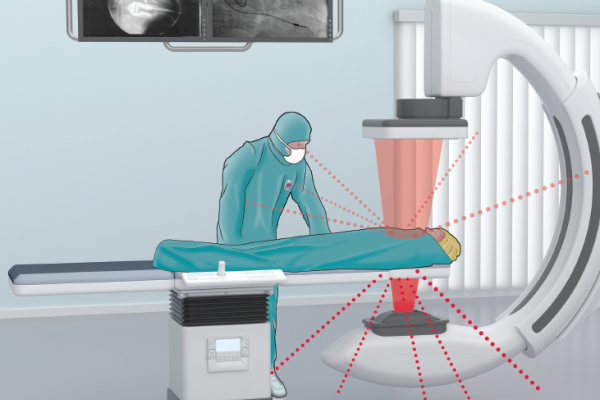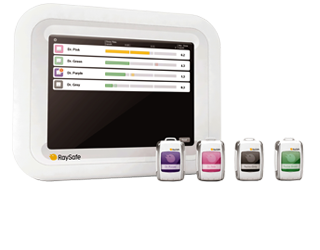News
Visualizing scattered radiation

As touched upon in the previous post, interventional X-ray professionals have a number of tools and techniques at their disposal, which they can use to minimize their radiation dose. From a general perspective, dose reduction techniques can be grouped into time, distance and shielding. Within interventional X-ray, there are also a number of machine related settings that will affect radiation dose, such as frame rate, collimation and angulation.
However, since ionizing radiation is undetectable by our human senses, the medical staff has to decide on suitable measures without any way to see or feel their current and actual radiation exposure. Let’s compare with other parts of life – how many speeding tickets would we get if our cars came without speedometers? How many appointments would we miss if there were no clocks or watches?
This is where Real-time Staff Dosimetry (“RTSD”) makes a difference. RTSD measures each user’s current exposure every second and visualizes it as colored bar graphs on a centrally located display. That way the users get quantitative information to act upon, as well as immediate feedback on whether their dose reduction efforts are effective.
As the example below will illustrate, the insights offered by RTSD, in conjunction with traditional radiation protection techniques and periodical radiation safety training, can form a powerful foundation for controlling and minimizing the occupational radiation dose.
How University of Rochester Medical Center managed the staff radiation dose in high-dose labs
University of Rochester Medical Center (URMC) was having difficulty managing staff radiation dose in certain labs, some physicians had annual radiation doses just under the 5 rem legal limit. “With a high level of ALARA letters and suboptimal radiation work practices, we knew that we needed to further the URMC radiation safety program to reduce radiation dose and improve staff safety,” explains Frederic J. Mis, Ph.D., CHP, who was URMC’s new Director of Radiation Safety and Radiology Quality Assurance at the time. The URMC administration supported Dr. Mis’s request for additional personnel radiation safety training and tools to improve the radiation safety culture. The medical center added and repaired shielding and modified training programs. At the same time, Dr. Mis and his team implemented RTSD (Real-time dose monitoring) for their high dose interventional labs. “We immediately implemented this new system in two labs to reinforce to physicians and staff how their radiation practices were affecting their dose exposure,” Dr. Mis notes.
“RTSD provided staff the ability to ‘see’ their radiation dose during patient cases. Radiation exposure quickly decreased, even during training, because the ‘red cloud’ became easier to conceptualize.” The medical center feared that the benefits of its aggressive dose reduction plan would not be apparent for several years. Instead, its collective radiation dose began to drop very quickly, leading the hospital administration to equip an additional four rooms with real-time dose monitoring. “In our first full year of implementing this new dose reduction program, we noted a 50 percent reduction in staff dose,” concludes Dr. Mis. “Real-time dose monitoring has become part of the culture at URMC and is mandatory, although well accepted and appreciated by staff.”
Get more information on this important issue from this White Paper: How Aurora West Allis Medical Center reduced the radiation dose on their staff
Learn more about RaySafe i3 RTSD
